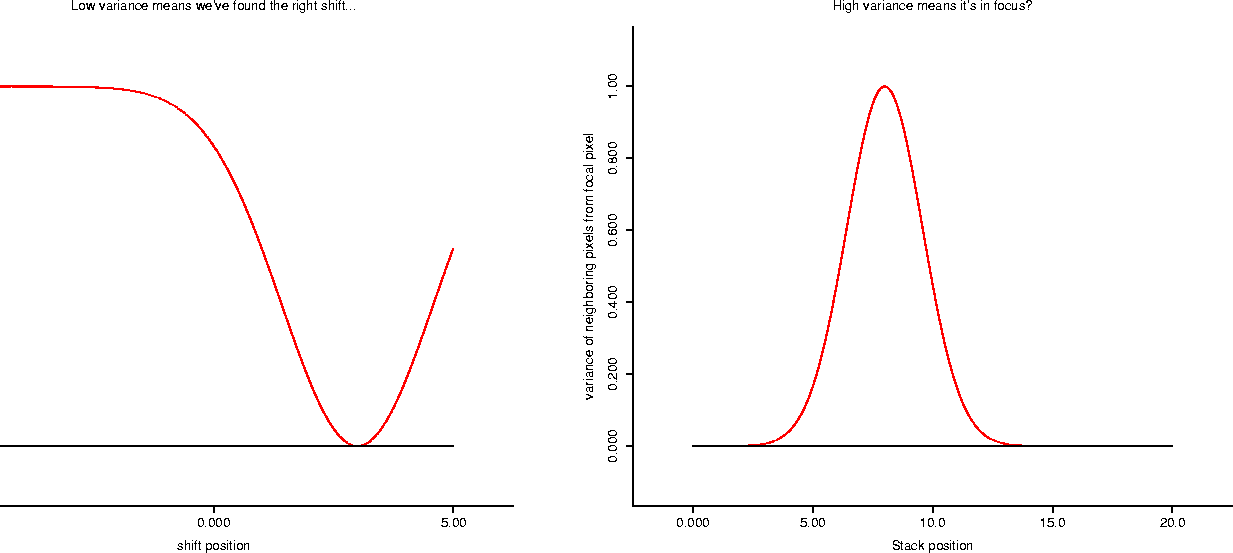


Next: Appendix
Up: Case Study
Previous: Non-linear regression as multivariate
There are several ``opportunities'' for regression in the fly project:
-
When we do the correction for the shift in images, we do it by doing a
``variance check'' in the neighborhood of a pixel. If the variance is lowest
for a shift of two pixels right, one pixel up between two images, we assume
that the images has moved by that amount. There's rounding, of course - the
image hasn't really shifted by that amount, but by some fractional part thereof
- but we need to compare pixels on a pixel by pixel basis (or do we?). At any
rate, we do this right up the stack, pairing up images; we should really do a
global fit, to see how the trajectory is working out. We might be able to fit a
better trajectory by working over the whole stack, rather than simply
pair-wise.
-
Once we have the pixels all aligned, we try to figure out where a given pixel
is in focus (if anywhere). We do a variance calculation as we proceed through
the stack, hoping that we'll find a point where the variance is highest (and
assume that this is the point where the pixel is in focus). We fit the
variance, and so can assign a non-integral value to the ``height'' of the
pixel's information (generating what we call the height map).

LONG ANDREW E
Mon May 3 09:10:25 EDT 2010